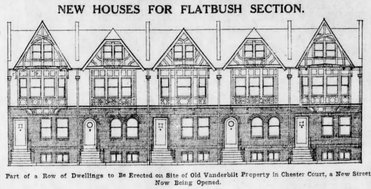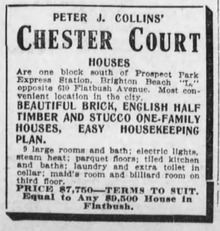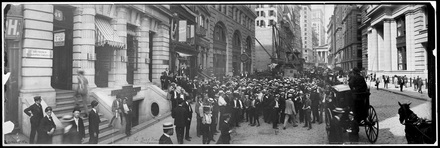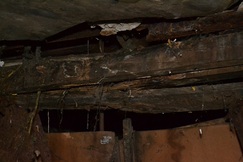 The Brooklyn Daily Eagle, 28 October 1911.
The Brooklyn Daily Eagle, 28 October 1911. The houses date back just over 100 years. They were built along a new street that was being constructed in Flatbush in October of 1911. The street cut through the old property which once belonged to the Vanderbilt family and which included part of the old family homestead. Ironically, although the Vanderbilt homestead was called "a Flatbush landmark" and was said at the time to be one of the few remaining landmarks left in Flatbush, it was demolished to make way for Chester Court - the area now under consideration to be dubbed Chester Court Historic District.
 The Brooklyn Daily Eagle, 7 July 1912.
The Brooklyn Daily Eagle, 7 July 1912. The builder, Peter J. Collins, was Brooklyn's Superintendent of Buildings and a prominent architect in the borough. To landmark the Chester Court Historic District, where the demolished Vanderbilt landmark once stood, and to recognize the work of this Brooklyn architect, would be a nice compensation for the loss of the Vanderbilt homestead.
The hearing is scheduled for Tuesday, November 25, 2014 at 9:30 a.m. at a public hearing at 1 Centre Street, 9th Floor, Manhattan. To learn more, view the agenda here: NEW YORK CITY LANDMARKS PRESERVATION COMMISSION - RESEARCH DEPARTMENT PUBLIC HEARING AGENDA.
Contact us to schedule a consultation for building research.




 RSS Feed
RSS Feed